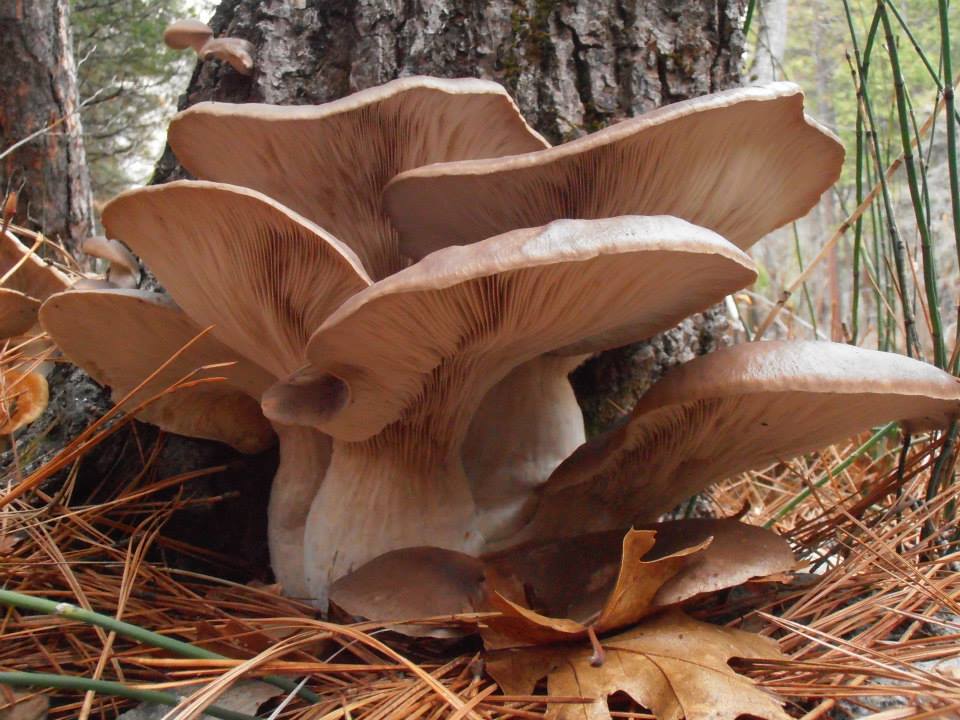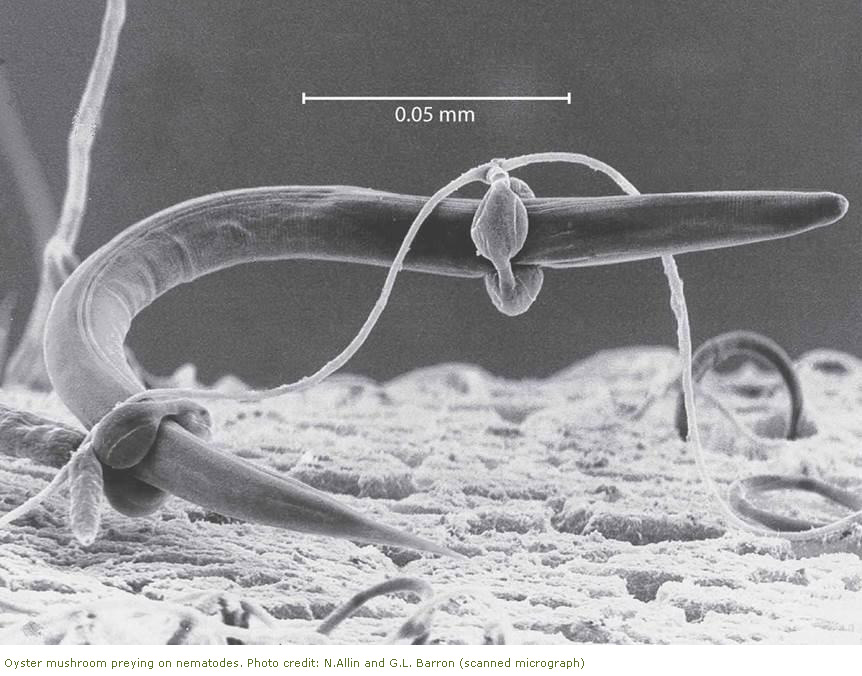Some people love them. Some people hate them. Regardless of your stance they are a fascinating life form. They are mysterious, beautiful, weird, tasty, deadly… predators!? That’s right, things just got weird—some mushrooms are actually predators!

Oyster mushrooms can be found growing on dead and rotting cottonwoods, oaks, and other hardwoods. They are an essential decomposer of the forest, but that’s not all they are up to. They are also on the lookout for the small microscopic roundworms, called nematodes, which are living in the wood. Mushrooms looking for macroinvertebrates!? Oysters happen to be nematode-hunting wizards! Seriously. Let me explain.
Mushrooms are a single (and somewhat small) part of the overall fungal lifeform. They are the visible and charismatic part of the fungus, known as the fruiting body. Although getting most of the credit for the lifeform, mushrooms are ephemeral while their counterpart lives on. Imagine the mushroom is the apple on the apple tree. So where is the rest of this creature hiding? The larger part of the fungus, called mycelium, is hard at work inside of the wood. Mycelium can also be found in the soil as a root-like structure. Oyster’s mycelium is using enzymes to break down the wood and ingest it, similar to the enzymes we use to break down the food in our stomachs.
Can you imagine only eating wood? To balance this fibrous diet, Oysters mushrooms have evolved a way of catching other food sources. This is where the hunting wizardry comes in. First, they have to lure these nematodes in. They achieve this by excreting a chemical that smells like food to the nematodes, bringing them closer. The fungus also is excreting a toxin that is extremely efficient at paralyzing these now hopeless nematodes. With a motionless, but live catch, they go in for the kill. The mycelium filaments, known as hyphae, enter the nematodes through their mouths and then feast… from the inside out!

Oyster mushrooms aren’t the only fungus with an appetite for nematodes. As shown above, the rings around this unfortunate nematode are a part of the mycelium of another fungus, Arthrobotrys anchonia. These snare-like traps are sensitive to the touch and tighten around the nematode, excrete toxins to paralyze it, and then feast!
This is all happening on a microscopic level inside of wood and in soil beneath our feet. They are keeping nematode populations balanced, also prey upon bacteria, and are breaking down rotting wood. Who knew? Next time you’re out exploring, try to slow down and ponder all the wonders that are happening around you. You might be surprised with what you find.
Note: Do not handle mushrooms that you are not familiar with. Poisonous mushrooms can be found throughout the park and should be admired with caution.
Source: Barron, G. L. 2003. Predatory fungi, wood decay, and the carbon cycle. Biodiversity, Volume 4: 3-9.
